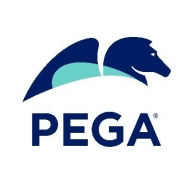

OpenText 360 for SharePoint and Pega Platform are both competitive in the enterprise software solutions arena; OpenText 360 appears to have an advantage in document management, while Pega excels in BPM and automation capabilities.
Features: OpenText 360 for SharePoint integrates seamlessly with Microsoft Teams, offers extensive metadata management, and robust search functionalities. Pega Platform includes advanced process automation, low-code capabilities, and a robust rule engine.
Room for Improvement: Users of OpenText 360 for SharePoint highlight the need for improved licensing structures and better integration with third-party tools. Pega Platform is criticized for its complexity, high cost, and needs better cloud integration and AI support.
Ease of Deployment and Customer Service: OpenText 360 benefits from robust customer support and Microsoft’s technical assistance, offering quick responses and issue resolution. Pega Platform provides versatile deployment options but requires improvements in technical support, especially for complex implementations.
Pricing and ROI: OpenText 360 is linked with complex licensing and infrastructure investments, though it provides substantial ROI through operational efficiencies. Pega Platform, while premium-priced, offers compelling value in supporting complex projects, providing ROI through process efficiencies.
The return on investment provided by OpenText 360 for SharePoint is excellent, and that is why we are continuing this team for the past 3 years.
It eliminates the challenges associated with handling files on local servers and allows efficient document management.
I have not directly contacted vendor support but use forums for any queries or issues while utilizing OpenText 360 for SharePoint.
The technical support from Pega is very low, rating a one or two out of ten.
I never needed support from the platform standpoint, but if additional features are required, we have regular meetings with the product team for feedback.
Pega's technical support team is very helpful.
Currently, big banking providers and insurance providers, even the members for healthcare payers, are using more than millions of operations on a daily or weekly basis.
If it were possible to merge everything and bring all information from multiple teams (Cognos, ClickView, AWS) into SharePoint as a centralized place, it would be really helpful.
Integration with a feature like Planner could assist in assigning tasks to specific individuals for follow-up.
The GUI should be improved for better user experience.
With the recent development of AI agents in Pega Platform 24.2, the adoption is not heavy due to regulations around using external LLM by customers, especially regulated customers in BFSS and healthcare.
Pega introduced Constellation, which allows a user to build a more engaging visual experience.
My learning curve in robotics has been challenging.
Pricing is very affordable as it is part of the Office 365 suite, costing around five dollars per user.
In terms of pricing, OpenText 360 for SharePoint is more expensive than Microsoft.
As an enterprise organization, we have enterprise service level agreements with customers and Microsoft partners, where organizations receive yearly discounts.
Pega is priced higher than open-source options like Flowable but is suitable for large-scale industries like banking and insurance.
The pricing is expensive, and this is an issue.
From a licensing perspective, it is higher than the competition.
OpenText 360 for SharePoint significantly saves time for users by streamlining the tasks of handling, searching, and maintaining documents compared to traditional file servers.
It offers automation capabilities with Power Automate, enabling automation of invoicing with API support from SAP.
The metadata can be retrieved from the SharePoint list, and those libraries and metadata serve as a very effective way that I am utilizing SharePoint, apart from just storing documents.
Management capabilities such as dashboards.
Pega Platform is excellent for enterprise-level solutions with integrations to entire systems, including case management, service orchestration, CRM, decision-making capabilities, digital process automation, and AI-driven functionalities.


Pega Platform facilitates business process management, case management, and workflow automation for industries like banking, insurance, and healthcare. It supports digital transformation and customer service enhancements with its low-code capabilities and seamless integrations.
Pega Platform enables users to create efficient systems for case management, financial operations, and digital transformations. It provides tools for client onboarding, quoting, claims processing, customer experience improvements, and content management. Pega's low-code approach allows for the automation of complex processes, making it suitable for enterprises looking for adaptability and rapid deployment. While it offers strong real-time analytics and decision automation, users acknowledge challenges in user interface, integration, and performance aspects. High costs and a learning curve need attention, and enhancements in AI features and cloud services are desired.
What are the key features of Pega Platform?In banking, Pega Platform automates loan processing, accelerates customer onboarding, and manages compliance. Insurance companies benefit from streamlined claims processing and policy management. Healthcare sectors use the platform for patient engagement and care coordination, enabling organizations to adapt quickly to changing industry requirements.
We monitor all Business Process Management (BPM) reviews to prevent fraudulent reviews and keep review quality high. We do not post reviews by company employees or direct competitors. We validate each review for authenticity via cross-reference with LinkedIn, and personal follow-up with the reviewer when necessary.